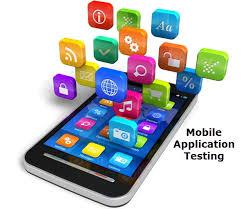Firms must execute a battery of software testing on each mobile app to provide high-quality digital goods to the market. Without mobile application testing service, mobile applications suffer greatly from a host of issues that lower the app’s quality, which in turn lowers the app’s return on investment (ROI) and damages the business’s reputation.
Fortunately, there are five things you should keep in mind when testing an application for mobile devices that will help you avoid this pitfall, increase the likelihood of finding many problems, provide a high-quality product to customers, and get the most out of your investment.
Mobile Application Testing: What Factors to Think About?
Application Testing in a Variety of Configurations:
While testing mobile applications, it is critical to perform user acceptance evaluations on various setups that cover more than just iOS and Android. We should keep in mind that an app’s efficiency and general usability depend on how well it works across various settings, which are like layers that the program must traverse before it reaches the end customer.
There are many settings and layers to consider while testing mobile software. The most crucial ones are the operating system, the latest release of the operating structure, the hardware that a given smartphone model presents, and the screen dimensions. Each level affects an app’s speed and usability.
Evaluating Applications on Different Screen Sizes and Features:
Size is irrelevant unless you’re talking about testing apps, of course. Because testing on different screen sizes might reveal issues with the app’s layout, it is crucial to consider screen size while developing an app. Essential features and accurate items could disappear from view whenever an app doesn’t adapt appropriately along specific dimensions. Digital engagement and the brand’s reputation will suffer when this occurs.
Even more crucially, when vital parts of an app are partly or entirely hidden from view, it’s easy for some of its value to diminish. Several manufacturers encountered this issue upon the release of the iPhone.
Once the “notch” was introduced, mobile applications had to adapt to the iPhone differently. Many programmers had to revise their applications because of this so they could work with the updated design.
Case Studies for Functional and Usability Testing:
Should I use emulators or actual devices while testing an app? This is a crucial topic to consider when organizing your next mobile app test campaign.
One advantage is that functional tests may be run using emulators, which is more cost-effective than constructing a library of physical testing equipment.
On the other hand, emulators can only verify or test certain features. When it comes to mobile software testing services the phone’s functionality, such as its camera, geolocation capabilities, biometric scanners, and other newly added features, real smartphones are the way to go.
Evaluating the app’s usability and general user experience while testing it on actual devices is much simpler. Using actual devices for testing will help you conduct a more comprehensive mobile app test because your clients or customers will use your app on their smartphones or tablets, not on emulators.
Comparing Manual Testing with Test Automation:
To get the most out of your mobile app testing time, consider automating as many test cases as possible. The goals of the test campaign and the app’s characteristics will greatly determine this.
Test automation is the way to go when manual testing is inefficient or not feasible. This is especially true for data-driven, repeated, and regression tests. Thinking about this issue can improve the execution of mobile testing campaigns.

